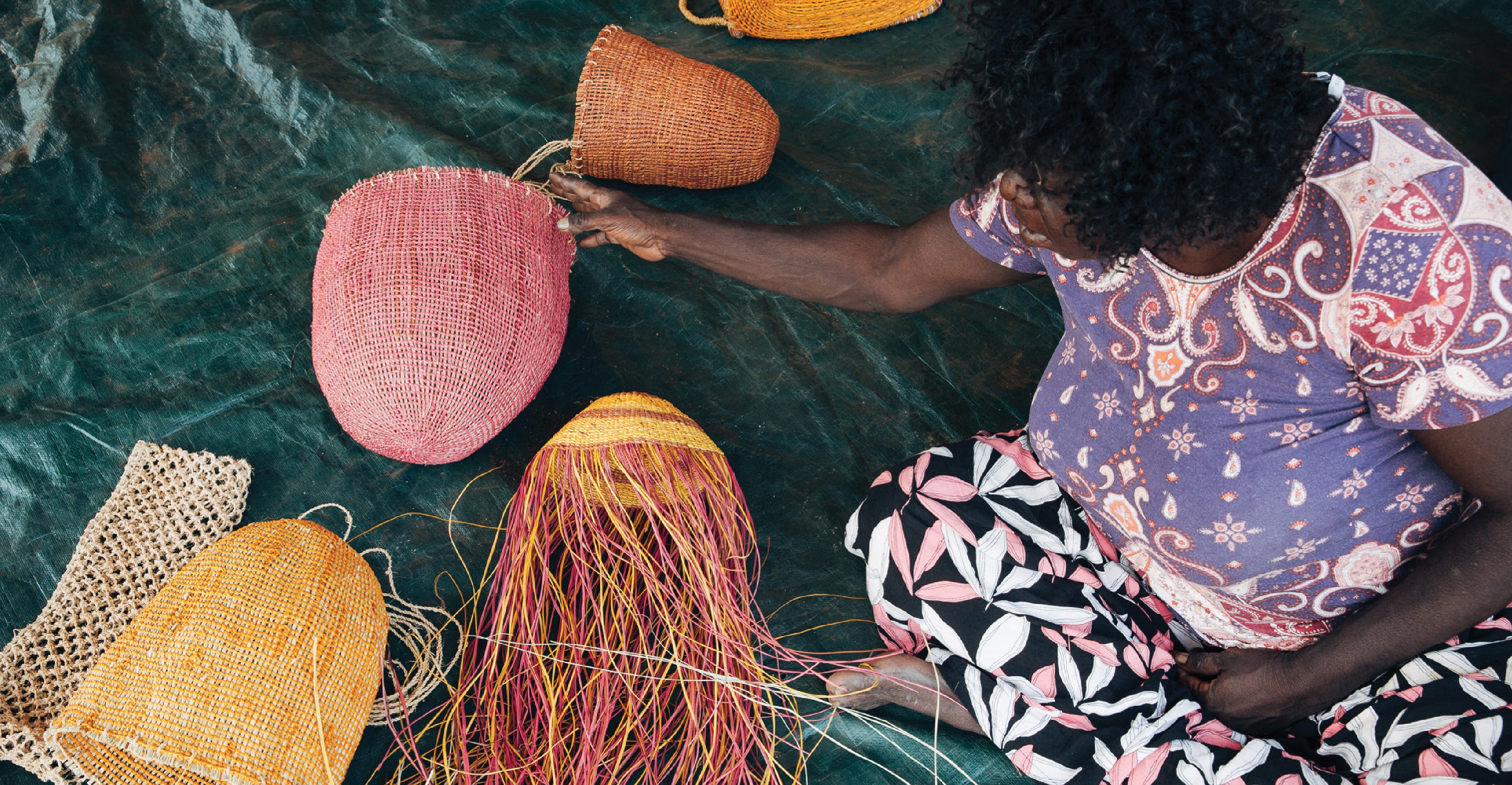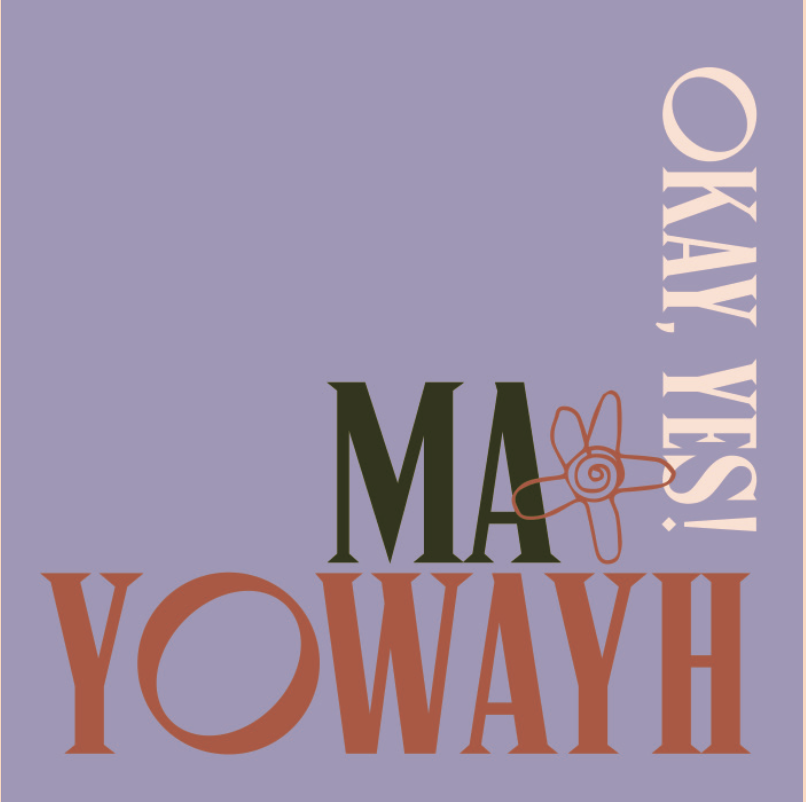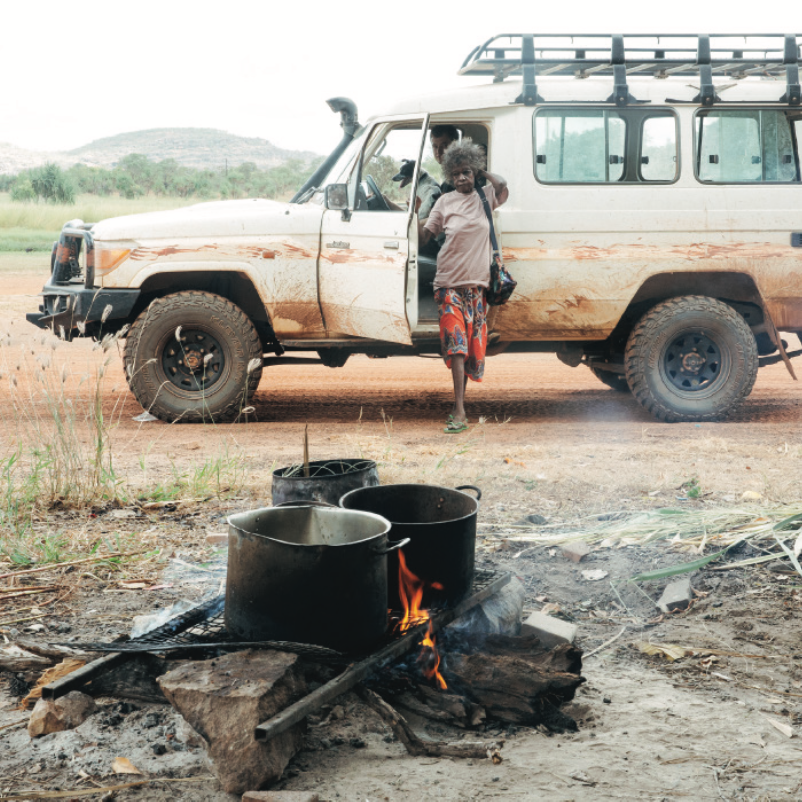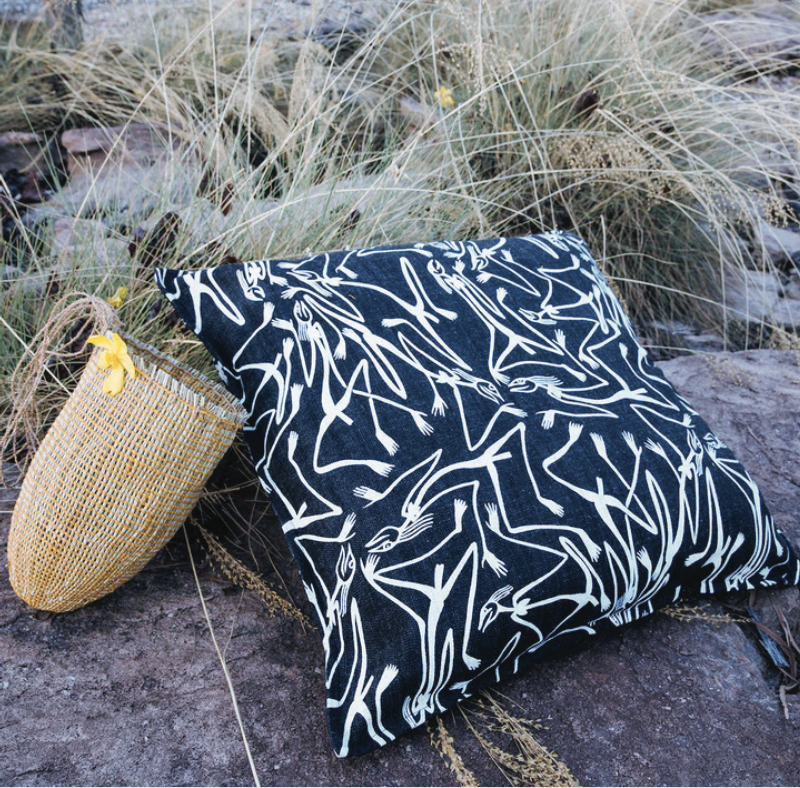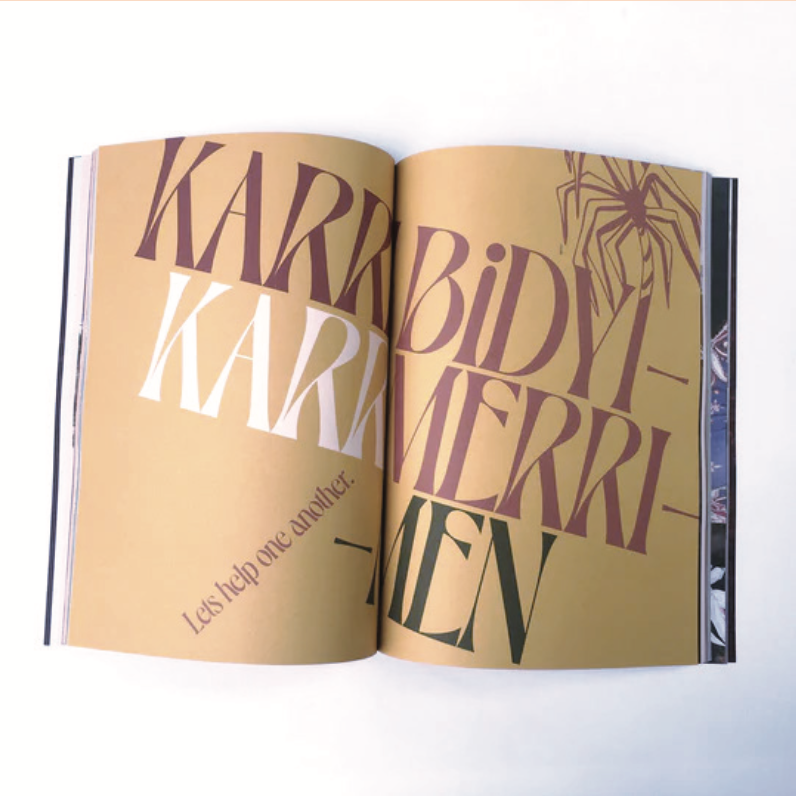Tiwi artists are known internationally for their distinct style of ochre painting and carving. Ochre paintings come from Tiwi ceremonies, where ochre painted jilamara (design) is used for body painting to protect from mapurtiti (spirits of the dead). Each artist featured in the Tiwi Strong Women's collection has their own style and design, used in both art & ceremony.
-
Cornelia Tipuamantumirri - Rokini Jilamara
Along the beaches of Melville Island purple flowers bloom bright and beautiful; distinguished by its flowers the eye-catching Rokini vine is revered not only for its beauty but also for its medicinal and healing properties. The plant is particularly useful in treating a variety of skin-related ailments such as scabies, irritation and itchiness.

Bernadette Mungatopi - Winga Jilamara
Winga is a Tiwi word meaning patterns of the sea. In Bernadette’s design you can see the lines of the sand and the salt water washing up through the mangrove. The ocean is important to Tiwi people, Tiwi are salt water people who live by the sea. When making her design, Bernadette held the story of Winga in her mind, and put it on the screen, now it is printed onto fabric.
“I’ll feel happy when people start wearing my design, I’ll be proud. When you wear our designs, and you feel proud, send a photo back to us and we can feel proud too.”

Kaye Brown - Pwoja Jilamara
Kaye paints jilamara (design) with the kayimwagakimi, also known as pwoja, which means bone. Pwoja is a traditional Tiwi painting 'comb', made from ironwood and is unique to the Tiwi. It's a special tool for dot painting, Tiwi style. Each comb is hand carved and completely unique, hand crafted by an Art Worker at the Art Centre.

Nina Lydwina Puruntatameri - Yapilika JilamaraThis story comes from from
my dad. The jilamara is of my dads country, Yapilika, in middle
of Melville Island. The design represents the sacred site of Yapilika. My dreaming jungle fowl and owl, from this country.

Dymphna Kerinauia - Pukumani Jilamara
Dymphna’s design is for Pukamani ceremony, funeral ceremony. Pukamani ceremony was first performed in parlingarri (long time ago) when the Tiwi people first became mortal. One day, Wai-ai the wife of Purukupali, met her brother-in-law Japarra in the bush while she was collecting bush tucker and made love with him. She had left her baby son Jinani in the shade, but was away for so long that the sun moved and he died from heatstroke. Her husband Purukapali, enraged and devastated, fought Japarra, striking him with spears and throwing sticks. Japarra was injured, and flew up to become the moon, always reminding Tiwi of the life and death cycle (full moon, no moon, new moon). Wai-ai became the curlew bird Bima, forever crying out her grief in the dusk. Purukapali then performed first the Pukumani (funeral) ceremony for his son. He called out, "now my son is gone, we will all have to follow." From that day, Tiwi became mortal.

Michelle Woody - Strong Jilamara
Michelle’s jilamara represents her painting, both on canvas and body painting for Tiwi ceremony. Normally, Michelle paints in Ochre, now this design is painted onto a screen to make fabric. The design at its heart is about Tiwi culture, Tiwi jilamara (design.) Her fabric and her paintings are strongly connected, they’re about Tiwi culture.
“My fabric is connected to my painting, to my culture. It’ll be good to see people wearing my designs and sharing Tiwi culture. I would love to show it around the world, for people around the world to see Tiwi culture strong. Its important to our people that culture is strong.”

 Our journey
Our journey

